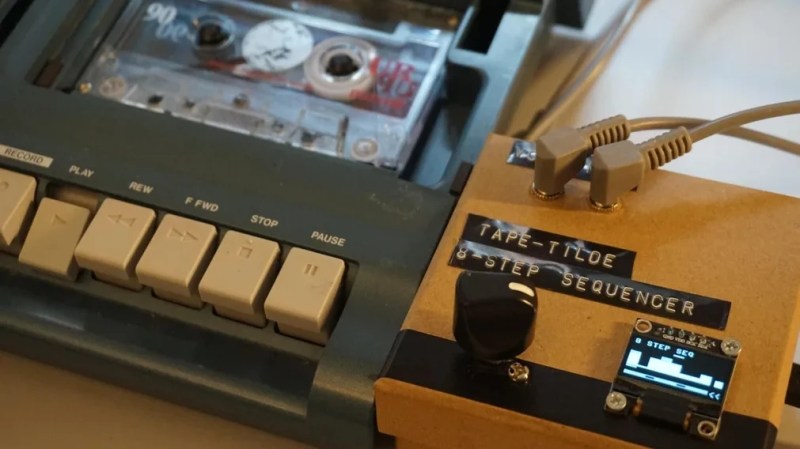The cool thing about magnetic tape is that by varying the speed at which you play it back, you can vary the pitch of the output. [Issac] decided to take advantage of this, executing a fancy digitally-controlled pitch mod on his Tascam Porta 02 tape deck.
The build uses a Raspberry Pi Pico, which employs PWM to control the speed of the tape drive’s motor. This is achieved with the use of an NPN transistor driven by the PWM output of the Pico. This allows accurate control of motor speed, and thus pitch.
With that sorted out, the project was fleshed out with an OLED screen and a rotary encoder. These allow various patches or scripts to be run on the Pico, controlling the motor speed of the tape player in various ways. With a bit of work, [Issac] was also able to create a function that converted MIDI note values into PWM values that determine various motor speeds.
The natural thing to do next was to put in a tape with a looping sample at a set pitch, and then vary it in a sequence controlled by the Pico. The 8 steps of the sequence can be manually set with the rotary control, and in future, [Issac] even plans to add a real MIDI input, allowing the system to act as a monophonic synth.
If you prefer other routes to pitch shifting shenanigans, check out this project. Video after the break.
















The way less-cool thing is when the pitch variations are uncalled for. I was attempting to overdub a recording made on a Tascam PortaStudio 4-track, and found ridiculous speed variations at random points throughout the song. This POS’s speed regulation was worse than a regular consumer tape deck.
In the end I had to memorize where the pitch shifts occurred in the recording and ride the speed-adjustment knob through dozens if not hundreds of attempts to get a synced overdub, degrading the tape in the process.
Fast-forward a couple of decades to the Tascam DR-70D, another POS. Shooting a documentary for a well-known client, we found to our dismay that this one will randomly record blank (digital silence) files for no reason, even when the meters and headphone monitoring prove that the mics are working and there’s audio coming through the unit.
Never again will I entrust anything to Tascam.
Hmmm,
I’m a little concerned about the Bias frequency changing pitch as well…
(While I’m at it, which tape formulation makes the best frequency generator? CrO2? FerriChrome? B^) )
OK, this is a “Cassette Deck”. Tape decks are reel-to-reel.
Cassette is just their first name. Their full name is cassette tape. So this would be a “cassette tape deck”.